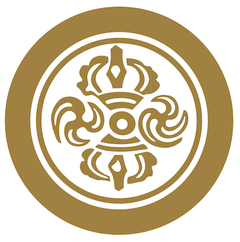Translations by Samye Translations
English (223)
Samye Translations, formerly known as Lhasey Lotsawa, is a growing team of translators, writers, and editors working under the guidance of Kyapgön Phakchok Rinpoche.
Texts translated into English by Samye Translations
Adeu Rinpoche
Atiśa Dīpaṃkara
Buddha
Buddhagupta
Chatral Rinpoche
Chöje Lingpa
by
Chöje Lingpa
Chokgyur Dechen Lingpa
Chokling Tersé Tulku
Chökyi Nyima Rinpoche
Dilgo Khyentse Rinpoche
Dodrupchen Jigme Tenpe Nyima
Dudjom Rinpoche
Eighth Karmapa
Fifteenth Karmapa
Fifth Dalai Lama
Fourteenth Dalai Lama
Gönpo Tseten Rinpoche
Jamgön Amnye Zhab Ngawang Kunga Sönam
Jamgön Kongtrul Lodrö Thaye
Jampal Dewe Nyima
Jamyang Khyentse Chökyi Lodrö
Jamyang Khyentse Wangpo
Jedrung Jampa Jungné
Jetsün Drakpa Gyaltsen
Jigme Lingpa
by
Jigme Lingpa
Karme Khenpo Rinchen Dargye
Khenchen Jigme Phuntsok
Mātṛceṭa
by
Mātṛceṭa
Minling Khenchen Ngawang Khyentse Norbu
Mipham Rinpoche
Nāgārjuna
by
Nāgārjuna
Neten Chokling Ngedön Drubpe Dorje
Ngakchang Shakya Zangpo
Nyala Pema Dündul
revealed by Nyala Pema Düdul
Nyangral Nyima Özer
Nyoshul Khenpo Jamyang Dorje
Orgyen Lingpa
Pema Karpo
by
Pema Karpo
Rangrik Dorje
Sakya Paṇḍita Kunga Gyaltsen
Samten Lingpa
Sangye Lingpa
Śāntigarbha
by
Śāntigarbha
Shakya Shri
by
Shakya Shri
Shechen Gyaltsab Gyurme Pema Namgyal
Shikpo Lingpa
Situ Paṇchen Chökyi Jungne
Śrī Siṃha
by
Śrī Siṃha
Tai Situ Rinpoche
Tashi Tobgyal
Tertön Sogyal
Tsewang Drakpa
Tulku Urgyen Rinpoche
Yeshe Dorje
by
Yeshe Dorje
